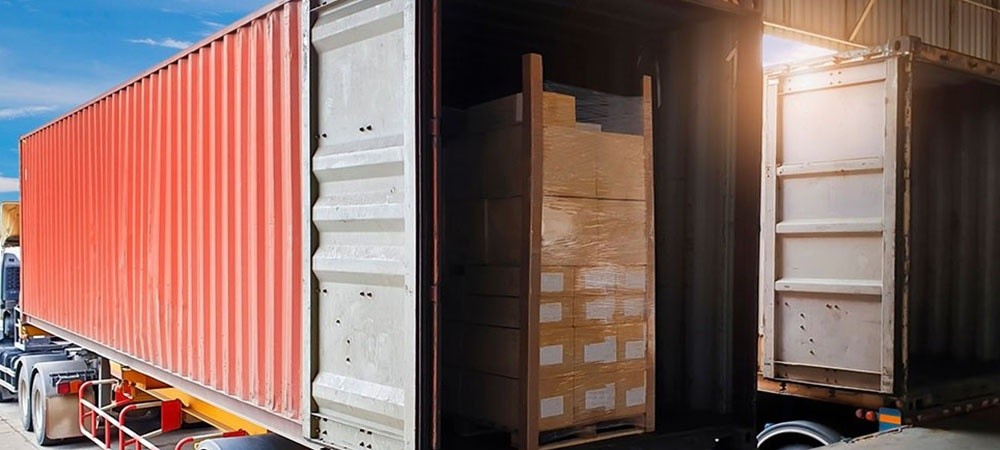How to Ship LTL Freight
Transporting LTL freight has several variables attached to it. For one, it requires detailed planning to ensure your shipments arrive on time and in good condition.
In addition, the LTL shipping process can quickly get complicated, especially when you’re inexperienced.
That’s where our specialist blog can prove useful. We’re home to freight transporters and trucking specialists with tons of experience moving LTL cargo across Canada. And we’ve put together a comprehensive LTL shipping guide born out of this hands-on experience.
Here’s how to ship LTL freight — in short, easy steps!
Key Steps to Ship LTL Freight
In the shipping industry, LTL stands for Less-than-truckload. And it covers shipments that don’t fill an entire truckload but must move quickly.
The following are proven steps that’ll help you ship LTL freight successfully:
Get a Quotation
Do you have a package to receive from Toronto, and you’re in Ontario? Or you’re a business manager that needs to send out your goods swiftly upon orders?
The first step on this LTL freight shipping guide is obtaining a freight quote. Freight quotes provide an estimate of shipping costs. And these charges are dependent on the information you provide to carriers.
You can get a freight quote from a freight broker, an online market or even a specific carrier.
Find the Right Specialist Carrier For You
Spending time to prepare LTL shipments only to have them mishandled by a carrier isn’t something you want. Therefore, one of the most crucial LTL freight shipping tips is selecting an appropriate expert carrier.
This selection should depend on your cargo’s nature and the desired service level. Also, you should only use a carrier with extensive experience shipping your particular product type. This note is essential if your product requires special handling during transit.
As an individual, using an appropriate carrier ensures you don’t have a damaged product upon delivery. Also, as a business owner, it reduces the possibility of damage claims from customers. Additionally, a good carrier may even provide insurance for your product while it’s in transit.
Related Article: LTL Freight Shipping Rates in the USA & Canada
Get Your Shipment Ready
It’s almost inevitable to experience package damage when you inappropriately pack your shipments. In fact, some carrier companies will bill you extra if you wrongly present your package or goods for LTL shipping.
Therefore, double-checking cargo measurements is an important box to tick. Ensure it’s in line with the freight estimate to avoid them overcharging you.
Up next is packing your LTL cargo. Pallets and crates offer the best avenue to move LTL freight smoothly.
There’s a high likelihood your cargo will experience multiple handling before and during shipment. Therefore, packing LTL freight with crates and pallets offers the best protection.
And, even at that, object placement is important. Place heavier items at the bottom of crates and the lighter ones at the top.
Label Preparation and Bill of Lading (BOL)
This step is crucial in the LTL freight shipping guide. The Bill of Lading is a pretty essential document between you and the carrier. It lists the shipment’s origin and destination.
Bill of Lading is more valuable than conventional shipping labels because it provides in-depth information. For example, the BOL includes weight, freight class, item count, and particular handling instructions. These details are rarely present on standard shipping labels.
Furthermore, the BOL must be completed and given to the LTL shipping provider at pickup time. If you reserve your shipment online or through an intermediate broker, you’ll still receive a Bill of Lading (BOL).
Additionally, you must affix a shipment label containing phone numbers, complete addresses, and PRO numbers on each box. This action is necessary regardless of whether or not you use pallets.
The carriers need specific notifications to ensure they move your LTL freight smoothly. Therefore, if your package needs special handling, like delicate or tilt-sensitive products, label them accordingly.
If you don’t want your package stacked on, ensure you indicate it on all four sides.
Arrange a Pick-Up Time
After you prepare LTL shipments for transit, simply schedule a pickup date. Also, remember that the designated pickup time may differ from when the carrier comes to pick up your package(s).
In general, most carriers attempt pick-up at your location within 90 minutes. However, this can vary depending on your location and other circumstances.
Keep a Close Check On Your Package
The PRO number you submit with the Bill of Lading allows you to track your packaged goods. The numbers are indexed into barcodes which you can read via simple scanning.
When the carrier picks up the cargo, the barcode will be scanned and entered into the carrier’s online tracking system. This code allows you to monitor shipping progress at every exchange point. As long as the carrier consistently updates the tracking information, you’ll always know your LTL freight’s location.
Deal with Outstanding Claims Or Invoices
Accidents are sometimes inevitable when you ship LTL freight. Therefore, occasions may arise where you need to file a complaint or claim as a direct customer of a business.
You’ll need proof of costs incurred to validate your claim if you want compensation for damaged freight. A successful claim needs the following four components:
- Shipping Documents in their original form
- Paid freight bill
- Proof of the package’s worth before damage.
- Inspection reports
Related Article: How Does LTL Freight Work?
Summary
Your efforts to ship LTL freight should start with a quote from your preferred freight transportation company. Plus, cargo specifications and sizing will inform packing and shipment preparation steps.
We also recommend packing LTL freight with pallets to prevent damage during transit. But, the reality is your choice of LTL shipping provider is the biggest determinant of your shipment’s eventual delivery condition.
Here at RoadLINX, we offer experienced LTL shipping services that require minimum fuss from your end. We’ll get your LTL freight to its destination in good condition and quickly too.
Call 905-760-1141 to join our next batch of LTL shipments leaving Ontario.
Sign up for industry alerts, insights & news from RoadLINX


